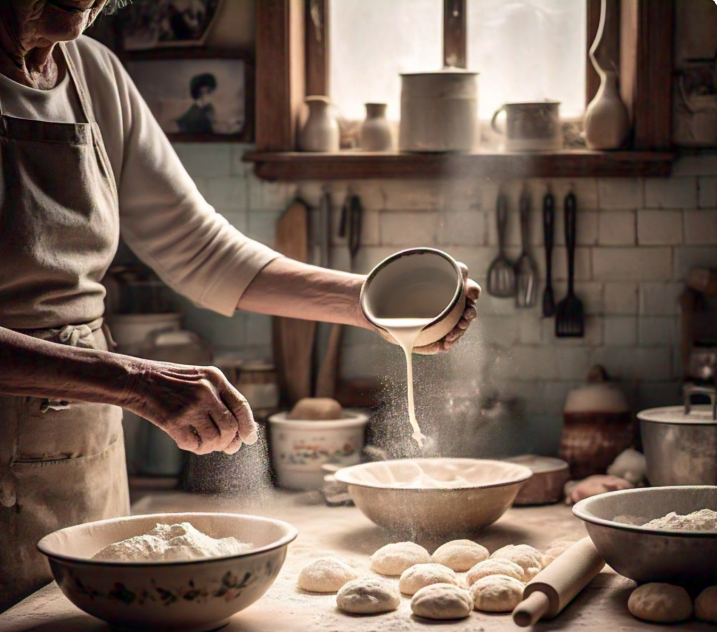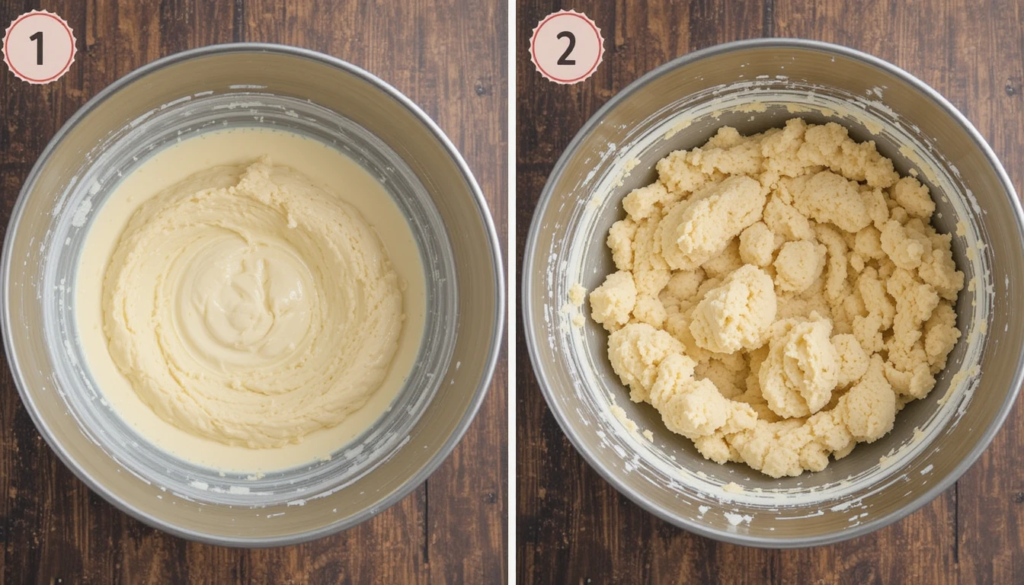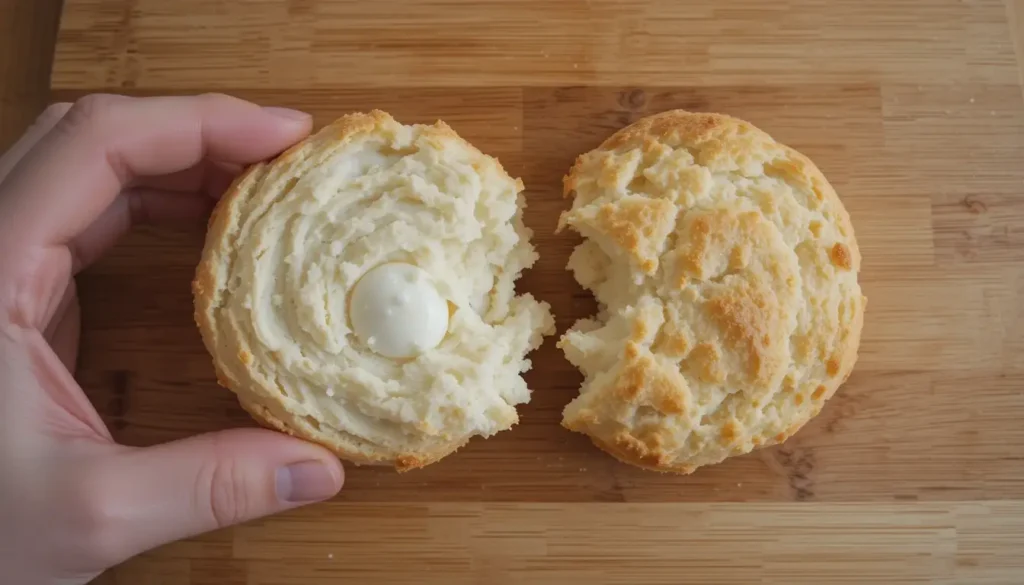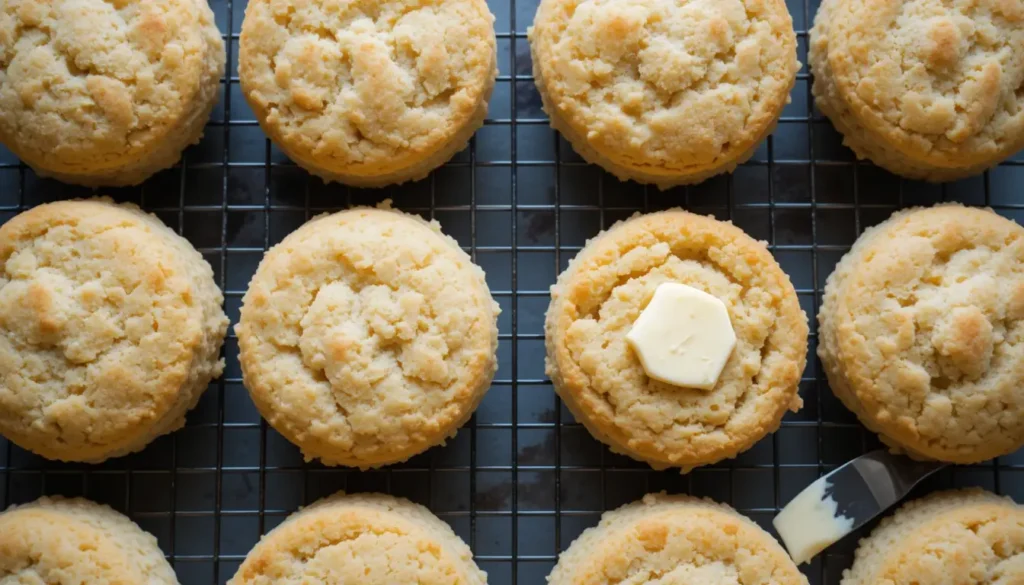Ah, biscuits! Whether you enjoy them fluffy and tender or crispy and golden, the choice of liquid can make or break your bake. Have you ever wondered if milk adds magic or if water keeps it simple? This seemingly small decision can dramatically influence the outcome of your biscuits. The Milk vs Water for Biscuits debate is more important than you might think, and understanding the differences can help you achieve the perfect texture and flavor. So, let’s dive in and explore this debate to help you make your biscuits irresistible every single time. Ready to get started? Let’s roll up our sleeves!
Table of Contents
Understanding the Role of Liquids in Biscuit Making
When it comes to baking, liquids are the unsung heroes. They don’t get the same attention as flour or butter, but trust me, they’re equally important. Liquids bind the dry ingredients together, transforming your mixture into a workable dough. But their role doesn’t stop there.
Why Liquid Choices Matter in Baking

Have you ever noticed how some biscuits feel like they could melt in your mouth, while others seem a bit dry and tough? That’s the magic (or the mistake) of liquid selection. Milk and water affect not only how the dough comes together but also how it behaves in the oven.
Think about it: milk brings fat, sugar, and proteins to the table. Water, on the other hand, is straightforward—it’s just H₂O. Each has its strengths and quirks, which we’ll uncover soon.
The Science Behind Milk and Water in Recipes
Here’s where it gets scientific. Milk contains casein proteins and lactose, which caramelize during baking. This creates that signature golden-brown color and a rich flavor. Water lacks these compounds, but it does hydrate the flour beautifully, which is crucial for gluten development.
But wait, don’t think it’s all about science! The best biscuits often come down to personal preference, just like choosing your favorite coffee blend. So, understanding these basics can help you tweak recipes to suit your taste buds.
“Baking is like chemistry, but with the bonus of delicious results. Choose your ingredients wisely, and you’re already halfway to success!”
The Benefits of Using Milk for Biscuits
Milk is often considered the MVP in baking. Why? It brings so much to the table that it’s hard to ignore. Let’s explore why milk might just be the secret ingredient for your biscuits.
Enhanced Flavor and Richness with Milk
One of the first things you’ll notice when you use milk is the difference in flavor. Milk’s natural sweetness complements the other ingredients, giving your biscuits a richer, fuller taste. It’s like adding cream to your coffee—it just elevates the experience.
Plus, milk enhances the Maillard reaction (a fancy term for browning). This makes biscuits look more appealing with a golden, slightly crispy exterior that’s impossible to resist.
Texture Improvements: Milk’s Impact on Tenderness

Ever bitten into a biscuit and felt like it was just too tough? Milk has your back here. The fat in milk adds tenderness, making biscuits softer and fluffier. If you’re after a biscuit that practically falls apart in your hands, milk is the way to go.
And let’s not forget the moisture. Milk keeps the dough hydrated without making it too sticky, which is a delicate balance every baker strives for.
Nutritional Advantages of Milk-Based Biscuits
If you’re into baking with a health-conscious mindset, milk might be your best friend. It’s packed with calcium, vitamins, and a bit of protein, making your biscuits not just delicious but also a tad more nutritious. Sure, it’s not a superfood, but every bit counts, right?
“Milk in biscuits is like the secret handshake of baking—it takes something ordinary and makes it extraordinary.”
The Advantages of Using Water for Biscuits
Now, don’t count out water just yet! While it might seem plain and boring compared to milk, water has its own set of advantages. Sometimes, simplicity is the key to perfection.
Crispier Biscuits with Water-Based Recipes
Want biscuits with a crunch? Water is your go-to. Since water lacks fat, it creates a dough that bakes into a crispier texture. This is perfect for those who enjoy a good snap with their morning tea or coffee.
A More Neutral Flavor Profile for Customization
Water doesn’t bring any additional flavors, which can be a blessing in disguise. It lets other ingredients shine, whether it’s the butter, cheese, or herbs you’ve added to the mix. Think of it as a blank canvas that you can paint with your favorite flavors.
Cost-Effectiveness and Accessibility of Water
Let’s face it—water is cheap and readily available. If you’re baking on a budget or just don’t have milk in the fridge, water works perfectly fine. And honestly, isn’t it great to have an option that’s both easy and effective?
Comparing Milk and Water for Biscuits

Okay, now that we’ve laid out the pros of both, it’s time to put them head-to-head. So, how do milk and water stack up against each other?
Flavor Differences Between Milk and Water
Milk clearly wins in the flavor department, offering a subtle sweetness and richness. Water, though, lets the other flavors pop, making it ideal for more savory biscuits.
Variations in Texture and Appearance
Milk-based biscuits are usually softer and slightly golden, thanks to the sugars in milk. Water-based biscuits, on the other hand, are lighter and crispier but may lack that inviting golden hue.
Impact on Dough Handling and Consistency
Milk doughs are generally easier to work with because the fat content makes them smoother. Water doughs, while still manageable, might feel a tad stickier. Both have their quirks, but neither is a dealbreaker.
“In the end, it’s all about what you love. Milk for softness, water for crunch—it’s your call!”
Common Problems When Choosing Between Milk and Water
Even the best bakers hit a few bumps in the road when deciding between milk and water for biscuits. The debate of “Milk vs Water for Biscuits” has its quirks, and understanding them can help you avoid common baking pitfalls. Let’s tackle these head-on so your biscuits come out perfect every time!
Biscuits Too Dry: Milk vs. Water Choices
Dry biscuits can ruin even the best batch. If you’ve opted for water, it’s possible the dough didn’t retain enough moisture. Water hydrates the dough but doesn’t add the fat or proteins needed to keep it moist during baking.
Milk, while generally a moisture-boosting choice, can also cause dryness if you use too little or the dough isn’t mixed properly. Pro tip? Always measure your liquids carefully and avoid overworking the dough.
Overly Dense Biscuits: Liquid Balance Issues
Nobody wants a biscuit that feels like a brick. Dense biscuits often happen when the dough doesn’t get enough lift during baking. Milk’s natural fat content can weigh the dough down if you use too much.
Water, on the other hand, creates a leaner dough. While this promotes a crispier texture, it can also make the biscuits too dense if the flour absorbs the water unevenly. The solution? Strike the right balance by following your recipe closely and adjusting based on the dough’s texture.
Flavor Mismatches in Milk or Water-Based Biscuits
Flavor is subjective, but it’s an important part of the biscuit experience. In the debate of Milk vs Water for Biscuits, milk-based biscuits can sometimes taste too sweet for savory applications, while water-based biscuits may feel bland without additional seasoning.
A quick fix? Use herbs, spices, or flavored ingredients like cheese to complement your chosen liquid. After all, baking is as much about experimentation as it is about precision.
“Think of baking as an art and science mash-up. Even if something goes wrong, you’re learning—and that’s worth celebrating!”
Tips for Deciding Between Milk and Water
Choosing the right liquid for your biscuits doesn’t have to be daunting. The debate of Milk vs Water for Biscuits offers plenty of room for exploration. With a few thoughtful considerations, you can tailor your choice to your recipe and personal preferences. Here’s how to decide based on your needs and what’s in your kitchen.
Considering the Recipe’s Purpose and Audience
Ask yourself: What type of biscuit are you making? A warm, flaky biscuit for a cozy family breakfast often calls for milk, lending a rich and indulgent feel to the meal. Think about those dreamy, soft biscuits you’d want to slather with butter or jam—they’re practically made for milk.
But what if you’re preparing for a dinner party or pairing the biscuits with hearty, savory dishes? In this case, water might be your secret weapon. Its neutral flavor ensures that bold additions like cheddar, rosemary, or black pepper shine through without competing with the dough’s taste.
And don’t forget your audience. Are you baking for kids who love sweet, buttery biscuits or adults who appreciate lighter, crispier textures? Tailoring your liquid choice to who will enjoy your biscuits can make all the difference.
Adjusting Other Ingredients Based on Liquid Choice
Liquids don’t work in isolation—they influence the entire recipe. For example, when you choose milk, you’re introducing extra fat, proteins, and sugars into the mix. This means you might need to scale back on butter or sugar to keep the balance just right.
Water, however, doesn’t add richness, so your biscuits might benefit from a touch more butter, a splash of cream, or even an egg to compensate. These adjustments help ensure that your biscuits stay moist and flavorful, no matter which liquid you use.
Here’s a tip: pay attention to the dough’s texture. If it feels too dry or too wet, don’t hesitate to tweak the quantities of liquid or flour. Dough is forgiving as long as you don’t overwork it!
“Recipes are more like guidelines than rules. Feel free to experiment and tweak until you find your perfect mix!”
Balancing Flavor and Cost in Baking Decisions

Let’s face it—not every biscuit you bake is for a special occasion. Sometimes, you’re just trying to whip up a quick batch for a casual snack or a last-minute breakfast. In these situations, water becomes your go-to. It’s cheap, readily available, and does a great job of pulling the dough together.
However, if you’re aiming to impress—say, for a holiday brunch or a special dinner party—milk can elevate your biscuits. Its richness creates a luxurious texture and taste that feels more indulgent. And if you’re really looking to step it up, buttermilk or cream could be the ultimate choice.
In the end, it’s about finding the right balance between flavor and practicality. Are you looking for an economical option, or are you prioritizing taste? The answer will guide your liquid choice.
“Baking doesn’t have to be perfect; it just has to be yours. Choose what works for you and own it!”
Making biscuits isn’t about following rigid rules—it’s about creating something you love. Whether you choose milk or water, the key is to enjoy the process and experiment until you find the biscuit that feels just right for you. 😊
FAQs: Is Milk or Water Better for Biscuits?
Still on the fence about which liquid to choose? Don’t worry—we’ve got answers to some of the most common questions to help you make an informed decision.
What Are the Key Differences Between Milk and Water in Biscuits?
Milk adds richness, flavor, and tenderness, while water creates a crispier texture with a more neutral taste. Both can produce amazing biscuits depending on your preferences and the recipe’s goals.
How Do Milk and Water Affect the Baking Process?
Milk’s sugars and proteins caramelize during baking, giving biscuits a golden-brown finish. Water, by contrast, hydrates the dough efficiently but lacks the compounds that contribute to browning and flavor depth.
Which Liquid Is Best for Healthier Biscuits?
If you’re aiming for fewer calories, water might be the better choice. However, milk offers added nutritional benefits like calcium and protein, making it a healthier option overall.
Can You Substitute One for the Other in Recipes?
Yes, but proceed with caution. Replacing milk with water can make the biscuits less tender and flavorful, while substituting water with milk may require adjustments to other ingredients for balance.
For those interested in the science of baking, you might enjoy exploring related topics like why does my cheesecake base go soggy.
Conclusion: Choosing the Right Liquid for Your Biscuits
When it comes down to it, there’s no definitive winner in the milk vs. water debate—it all depends on your goals. Want tender, golden biscuits with a rich flavor? Go with milk. Craving crispy, light biscuits with a neutral base? Water’s your best bet.
Ultimately, the joy of baking lies in experimenting and finding what works for you. So grab your apron, test both options, and let your taste buds be the judge! After all, life’s too short for bad biscuits.
If you are looking for alternative biscuit ingredients, you might find this article about what is a good substitute for biscuit base helpful.

